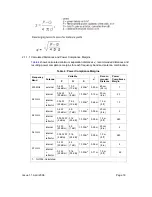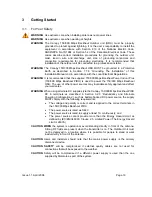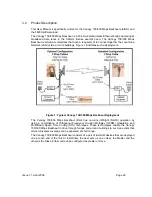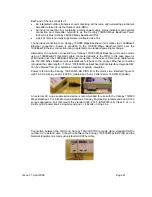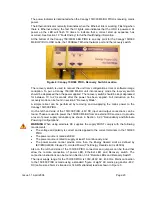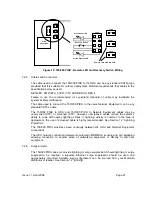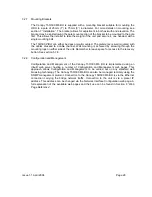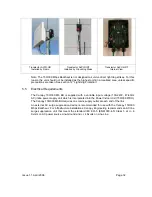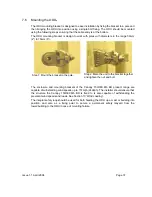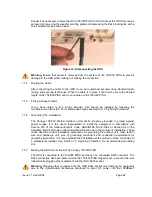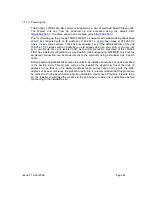
Issue 1.1 April 2006
Page 31
5
General Considerations
5.1
Frequency Planning
The Canopy 150/300 Mb BH operates over the frequency range 5.725 to 5.850 GHz (defined
as the USA ISM band and the ETSI 5 GHz C band), utilising a 30 MHz wide channel. Setting
of the operating frequency channel is automatic and is carried out by the built in Spectrum
Management (iDFS) functionality.
The user can configure the Canopy 150/300 Mb BH to avoid using certain frequencies thus
preventing interference with other users of the band and prevent operation in parts of the
band containing interference. The use of this functionality is described in detail in section
8.3.6 “Spectrum Management”.
5.2 Range
The Canopy 150/300 Mb BH will operate at ranges from 100 m to 200 km, this within 3
modes. Operation of the system will depend on obstacles in the path between the units.
Operation at 40 km or above will require a near Line-of-Sight path. Operation at 100m could
be achieved with one unit totally obscured from the other unit, but with the penalty of
transmitting at higher power in a non-optimal direction, thereby increasing interference in the
band. This subject is covered in more detail in section 6.1.3 “Path Loss Considerations”.
5.3
Networking Information
The Canopy 150/300 Mb BH operates as a transparent Ethernet bridge. Each unit requires
an IP address. This IP address is for management purposes only and it plays no part in the
operation of the system. IP addresses are assigned during initial configuration as described in
section 7.2 “Installation Procedure”.
5.4
Lightning Protection
The amount of lightning protection is dependent on regulatory requirements and the end user
requirements. The standard Canopy 150/300 Mb BH ODU is fitted with surge limiting circuits
and other features to minimize the risk of damage due to nearby lightning strikes. These
standard features may require some additional equipment to be configured as part of the
system installation to be fully effective. Motorola recommends the use of screened cable and
a surge arrestor to protect connected equipment from nearby strikes.
It is recommended to source a Transtector ALPU-ORT (
protection surge arrestor for your local distributor in order to protect 150/300 Mb BH Radios
from lightning strikes. The idea of lightning protection is to protect structures, equipment and
people against lightning by conducting the lightning current to ground via a separate
preferential solid path and by reducing the electromagnetic field. A separate two-page
lightning protection Alert Note is included in the shipping box with every radio.
Two Transtector ALPU-ORT are required for each end of the link. Shown here are one
Transtector surge arrestor installed by the radio and another one installed by the grounding
stake.
Summary of Contents for Canopy 150 Mbps Backhaul
Page 1: ...Canopy 150 300 Mbps Backhaul User Guide BH150 300 UG en Issue 1 1 April 2006 ...
Page 25: ...Issue 1 1 April 2006 Page 24 Figure 5 Canopy 150 300 PIDU Power Input ...
Page 97: ...Issue 1 1 April 2006 Page 96 Figure 59 Spectrum Management Help Page ...
Page 162: ...Issue 1 1 April 2006 Page 161 Figure A8 Surge Arrestor ALPU ORT Connection Illustration ...


